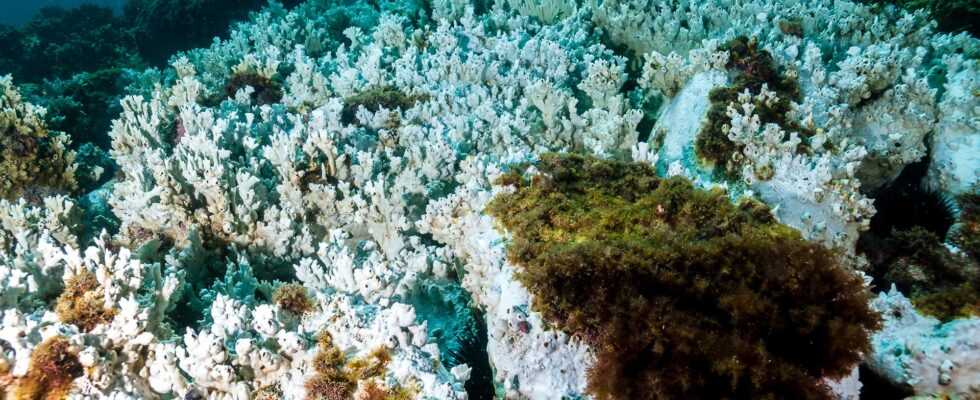The Great Barrier Reef off the east coast of Australia, the world’s largest coral reef, has again been hit by a devastating coral bleaching event. Not only is it the fourth such event in seven years, it also comes at an unexpected time. The Pacific is in a La Niña phase, which is supposed to bring cooler waters to the coast of eastern Australia – experts had hoped the reef could recover this year from coral bleaching in recent years. According to the Great Barrier Reef Marine Park Authority, which oversees the sanctuary, aerial observations show bleached coral in all four sectors of the reef. These do not die automatically, but such events have a significant impact on growth, reproduction and the ability of the organisms to resist infection. Repeated severe coral bleaching threatens to kill large areas of the reef.
As early as December 2021, experts warned of a possible coral bleaching in view of the high water temperatures. The corals bleach because high water temperatures force them to expel the single-celled algae that live within them. These provide a significant portion of their sustenance, so losing their symbionts weakens them, although the algae return after a while. It is unclear how severe the coral bleaching will be, i.e. how long it will last and how large the affected areas will be. Much depends on the water temperatures. The Australian Meteorological Office assumes that the water will be up to 1.5 degrees warmer than normal in large areas of the reef by the end of April.
So far, the consequences have varied regionally. The areas most affected are near the coast in the center of the reef, where experts have already registered dead coral. The bleaching is milder in the far north and south, and according to the Great Barrier Reef Marine Park Authority, some of the reefs here appear completely healthy so far. Lower water temperatures are also forecast in the south over the next few weeks than in the rest of the reef.
Experts clearly attribute both the accumulation of coral bleaching and the unprecedented bleaching in a La Niña year to climate change. Australia is one of the regions where the effects of global warming are currently most noticeable. For example, marine heat waves, phases of unusually high water temperatures, around the continent are currently becoming both more frequent and longer. In the long term, the last hope for the survival of the ecosystem is for experts to track down particularly heat-resistant corals and use them to repopulate areas of the reef that have been destroyed.
